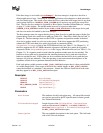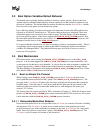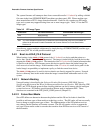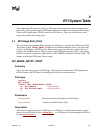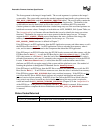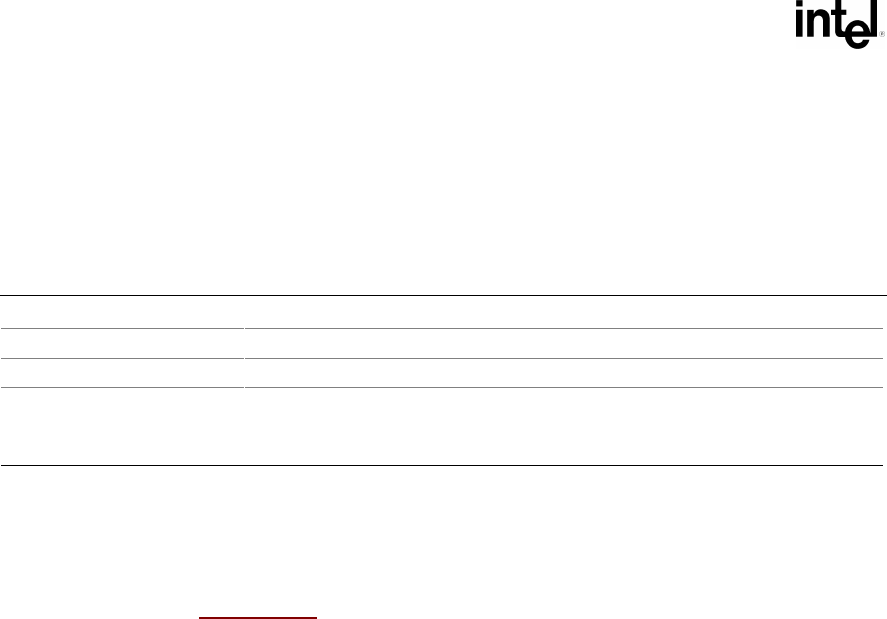
Extensible Firmware Interface Specification
3-8 12/01/02 Version 1.10
The system firmware will attempt to boot from a removable media FilePath by adding a default
file name in the form \EFI\BOOT\BOOT{machine type short-name}.EFI. Where machine type
short-name defines a PE32+ image format architecture. Each file only contains one EFI image
type, and a system may support booting from one or more images types. Table 3-2 lists the EFI
image types.
Table 3-2 EFI Image Types
Architecture File name convention PE Executable machine type *
IA-32 BOOTIA32.EFI 0x14c
Itanium architecture BOOTIA64.EFI 0x200
Note: * The PE Executable machine type is contained in the machine field of the COFF file header as
defined in the Microsoft Portable Executable and Common Object File Format Specification,
Revision 6.0
A media may support multiple architectures by simply having a \EFI\BOOT\BOOT{machine type
short-name}.EFI file of each possible machine type.
3.4.2 Boot via LOAD_FILE Protocol
When booting via the LOAD_FILE protocol, the FilePath is a device path that points to a
device that “speaks” the LOAD_FILE protocol. The image is loaded directly from the device that
supports the LOAD_FILE protocol. The remainder of the FilePath will contain information that
is specific to the device. EFI firmware passes this device-specific data to the loaded image, but
does not use it to load the image. If the remainder of the FilePath is a null device path it is the
loaded image's responsibility to implement a policy to find the correct boot device.
The LOAD_FILE protocol is used for devices that do not directly support file systems. Network
devices commonly boot in this model where the image is materialized without the need of a file
system.
3.4.2.1 Network Booting
Network booting is described by the Preboot eXecution Environment (PXE) BIOS Support
Specification that is part of the Wired for Management Baseline specification. PXE specifies UDP,
DHCP, and TFTP network protocols that a booting platform can use to interact with an intelligent
system load server. EFI defines special interfaces that are used to implement PXE. These
interfaces are contained in the PXE_BASE_CODE protocol (Chapter 15).
3.4.2.2 Future Boot Media
Since EFI defines an abstraction between the platform and the OS and its loader it should be
possible to add new types of boot media as technology evolves. The OS loader will not necessarily
have to change to support new types of boot. The implementation of the EFI platform services
may change, but the interface will remain constant. The OS will require a driver to support the
new type of boot media so that it can make the transition from EFI boot services to OS control of
the boot media.






